Photo courtesy of Thomas on Flickr.
If you only plant one food plot this year (or ever), it will probably be a woodland hunting plot. How do we know? It's where the action is!
Food plots come in all shapes and styles. And they all have value. But for many hunters, a backwoods hunting plot is the bread and butter for their season. In this Food Plots For Pros article, we tapped Peter Fidducia, aka "The Deer Doctor," to help make this all-important hunting site the best one you manage.
Some hunters plant both nutritional (year-round feeding) plots and hidden woodland spots for in-season hunting. Let's investigate the differences between them to maximize your efforts this year.
Why Plant a Backwoods Food Plot?
Simply put, it's where the deer are. Woodland plots often produce more deer activity, especially in low-light hours. Siting a food plot in these natural deer traffic zones can be a sure-fire way to attract and hold prime targets. But successfully growing a woodland plot isn't a layup. Here's a quick overview of the pros and cons of planting on the deer's home turf.
“Food plots in open fields have their time, especially in bow season,” Fiduccia says. “But most hunters believe they’ll see more deer in the woods than in the field -- and that’s true. A majority of deer move about in the woods versus in the open, particularly during hunting season and low-light hours.”
|
Advantages |
Disadvantages |
|
Easily discovered by deer |
Limited equipment access |
|
Easy to set stands or blinds |
Tree root competition for water & nutrients |
|
Attracts wary, experienced bucks |
Low sunlight limits crop choice |
|
Close to deer bedding areas |
Upfront land clearing work |
|
Forest cover may hold deer longer |
Limited planting window for peak hunting |
|
Small, manageable size |
Out of sight plots can go unmanaged |
|
No specialized equipment required |
Need to plan stand or blind approach to avoid spooking deer |
|
May be the only option on fully wooded land |
What's Different About Planting A Woodland Food Plot?
Aside from the surrounding tree cover, planting in the woods appears pretty similar to field planting. But there are essential differences that will affect your outcome.
Effort
Because backwoods locations are … in the woods, they are nearly impossible to access with conventional planting tools. So in the woods, your equipment arsenal is relatively limited. No one is hauling in farm-scale planters or chisel plows, even if they have them, which most hunters don't. That means most of the labor is on you, especially if your plot is small or if you can't afford fancy ATV accessories.
“Whether you have heavy equipment or not doesn’t really matter. Woodland plots are hard to access, sometimes even with an ATV,” Fiduccia says. “An iron-toothed heavy-duty rake to remove stones and rocks, a light leaf rake, leaf blower, and a few other hand-held tools will get you started.”
Plus, these spots have the added challenge of site clearing, often including stump removal, which is no small task. But don't be dismayed; it is doable Fidducia says.
“These smaller ‘stopper’ plots are useful to attract and hold a deer long enough for a hunter to decide if he wants to take the animal or let it pass. And most of these plots are less than a quarter of an acre.”
Location
Site selection is probably the single most critical variable in your success or failure. Woodland plots require careful attention to choose a location that provides enough sunlight, soil fertility, and drainage for good crop growth.
Choosing where to plant in a field is easier - flat, open land where space exists. But in the woods, especially on the smaller scale of hunting plots, you've got a lot of options. Most of them aren't great so choose carefully. We'll talk about specific site criteria in a moment. For now, just note that it will control your destiny.
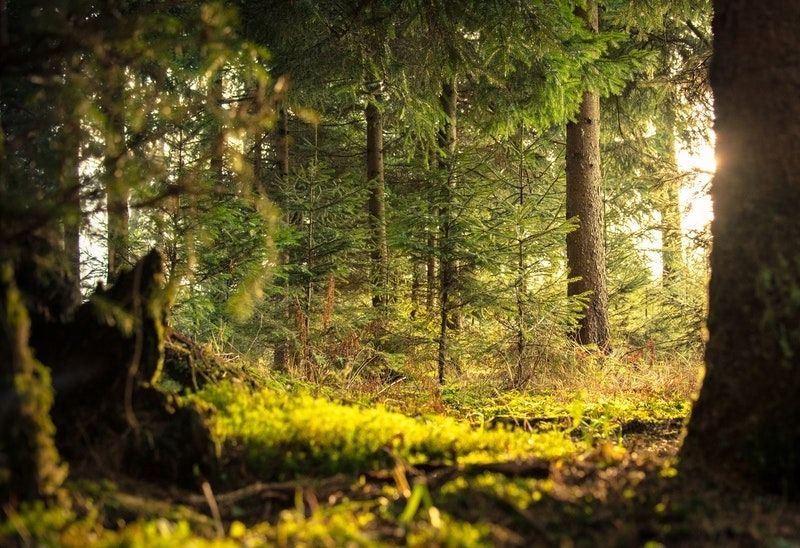 Photo from Pexels.
Photo from Pexels.
Crop Maturity
“90% of the hunters I talk to plant food plots for one reason: to draw in deer at the time of year they want to see them the most -- daylight hours of hunting season. That narrows down the type of plants you want to sow for woodland plots.” Fiduccia says.
Since hunting plots are designed for in-season use, they need to peak when you're in a stand (or blind), so not just any forage crop will do. Choosing a suitable forage and planting it at the proper time will ensure that it's most attractive during your season. This may vary between hunting regions and for the different weapon or wildlife seasons.
Compare your open season dates with the maturity timeline of your crop. Count back to determine the optimal planting window. Then back out some time for site prep. If you're counting on this forage as your primary hunting attractant, take the time to get these calculations right. A bumper crop in January is of little help if you're a bowhunter whose season peaks in mid-November.
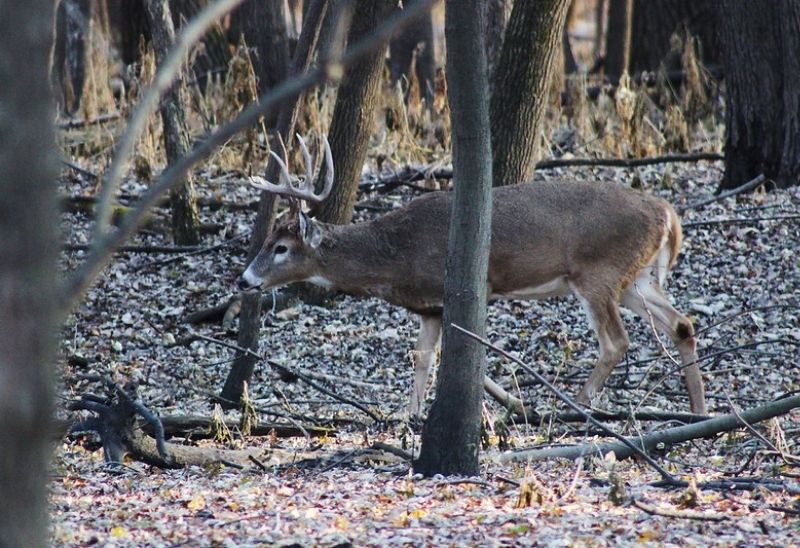 Photo courtesy of USFWS on Flickr.
Photo courtesy of USFWS on Flickr.
How to Establish a Backwoods Hunting Food Plot
Choose The Right Woodland Site
High Traffic
Backwoods planting is about taking food to the deer - not the other way around. But for food plots, like all real estate, location matters.
“Just because your plot is in the woods doesn’t mean it is in a high traffic area. It has to be located in areas where there is good deer signs,” Fiduccia says.
Start by identifying deer travel routes or other signs of deer activity (rubs, scrapes, bedding areas). Move your trail cameras around potential food plot sites to confirm traffic patterns and begin to recognize your herd residents. This is a fun and valuable preseason activity that will get you out in the woods and keep you tuned in to deer activity.
Deer patterns do change throughout the season. But like us, deer form routines and often take the path of least resistance. Travel corridors between important sites (food, water, bedding, cover) form the deer's highway network and are generally used year-round.
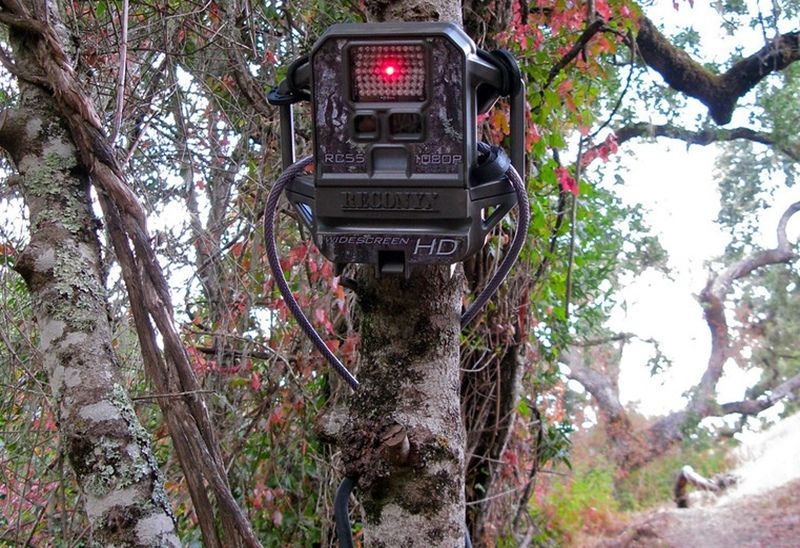 Photo courtesy of Steve Jurvetson on Flickr.
Photo courtesy of Steve Jurvetson on Flickr.
Bright Sun
With your area chosen, look for your own path of least resistance. Is there a small nearby clearing that will reduce tree cutting time? Or you can look for clusters of young trees, which have smaller root systems that are far easier to remove than mature trees. Assess how much sunlight the area will receive. Try visiting at different times of the day. Locations with less than six hours of sunlight will forever struggle with leggy, subpar crop growth. If your spot is still shady, look for neighboring branches that can be safely pruned.
“Most people don’t know that full sun means providing six to eight hours of sunlight. There’s a very limited number of plants that can grow in heavily shaded areas,” Fiduccia says.
However, remember that your goal is to create a hidden food source where deer feel comfortable grazing. If you need to clear trees, remove the minimum necessary to accomplish your sunlight objective. Maintaining cover close by will add to the deer's security to enter and linger at your plot. Clear your site, but not the forest.
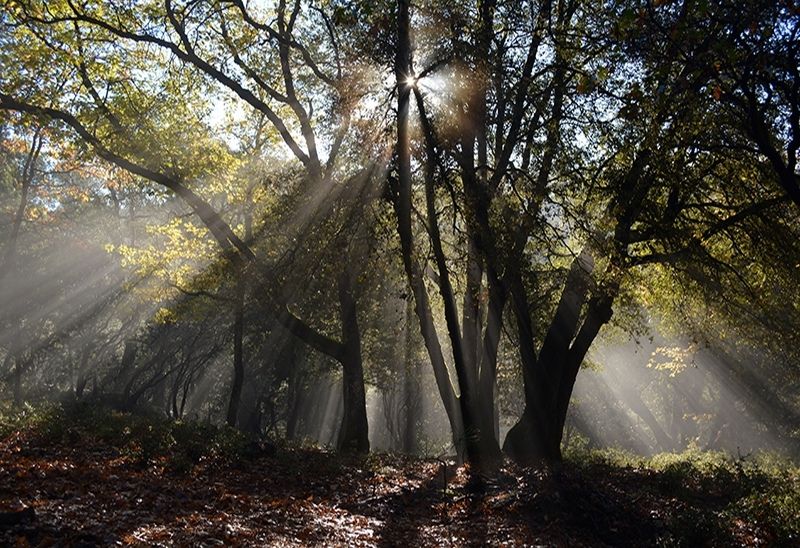 Photo from Unsplash.
Photo from Unsplash.
On the Level
A moderately flat or lightly sloped food plot location is ideal. They hold seed, water, and soil better and are easiest to work. Take every advantage you can get and choose a site that works with you.
Good Drainage
Avoid bottomland locations that never dry out. As wetter winter weather approaches, your crops may stay waterlogged, causing them to rot and die. Conversely, hillside locations undergo water and soil runoff, making them drought-prone and poor food plot choices.
If you can nail a high traffic rest stop with at least part-day sun, you are well on your way to food plot success.
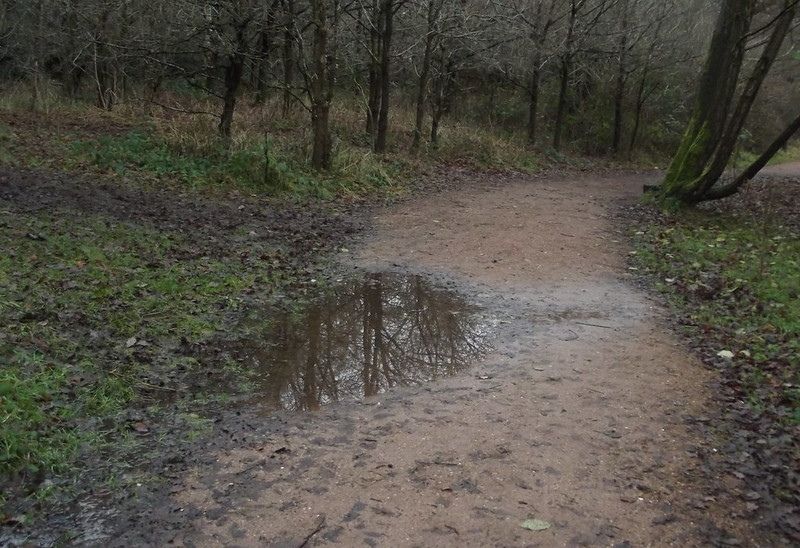 Photo courtesy of Elliot Brown on Flickr.
Photo courtesy of Elliot Brown on Flickr.
Prepare Your Food Plot Site
Stump Removal
If your site requires tree clearing, be thorough. It's tough work, but those stumps need to come out. Once removed, they may leave significant holes in your terrain. Fill them with something crops can grow in! Source fill dirt elsewhere on the property or bring in a few bags of topsoil. Rocks may fill the volume but won't support your future crops.
Do the job right once, and you won't have to come back to it. This is a great task to share with a hunting group or thirsty buddies. You can likely boost participation by offering an end-of-day a slow-cooked meal and favorite beverage to reward their efforts.
Tame the Weeds
Even if you're lucky enough to find a site with few trees, you're bound to have some weeds and scrub growth. Remove woody plants entirely (if possible) and kill tender weeds with a non-selective herbicide. Mature plants of any size are far more difficult to control with an herbicide. A string trimmer is another handy tool to make quick work of tender growth. If your budget allows, consider a blade attachment for stubborn weeds. Check our article on weed management for more tricks of the trade.
Blow off leaves or other small debris. You want as much blank canvas as possible for soil amendments and seed contact.
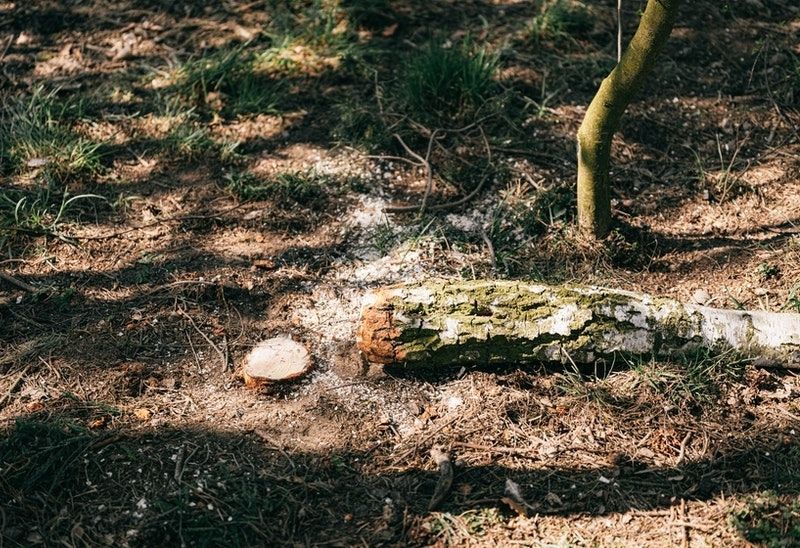 Photo from Pexels.
Photo from Pexels.
Focus on the Soil
One similarity of all food plots is the importance of good soil. Make it the best you can, and your investment will reward you with healthy crops and frequent grazers.
Start with a soil test. This is the single biggest mistake hunters make in starting a food plot. They skip the soil test. But nutrient balance and soil pH are some of the most important factors to crop health. And they are among the simplest to affect.
Don't guess. Take a soil test and follow the specific lime and fertilizer recommendations for your site. You might be surprised at how much soil conditions can vary on a single property. If you doubt soil balance's impact on your crop, read our soil management article for a refresher.
Note that lime, in particular, takes months to work its pH magic. Start your food plot prep early enough in the year to allow for lime and nutrients to do their thing. Know that these soil metrics will improve (with effort) over time. Keep tabs on your soil stats with a new soil test every 2-3 years.
While you’re in the woods taking a soil sample, measure and record the plot’s size to calculate the amount of seed you’ll need.
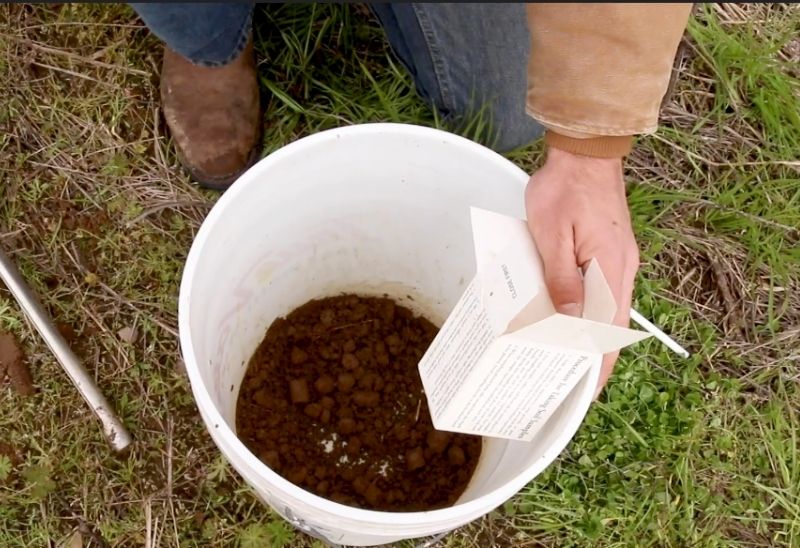 Photo by Alabama Extension on Flickr.
Photo by Alabama Extension on Flickr.
Plant Your Backwoods Plot
Select Your Seed
Backwoods plots aren't ideal for every forage crop. Odds are that it's not where you want a soybean or alfalfa plot. Choose a variety suited to your region and desired maturity timing. For most of us, that means a cool-season crop. These species are somewhat shade-tolerant and generally easy to establish.
“Sub-clover is a great plant for [light] shade, as is ladino, and durana clover. By using the right seeds that perform well in woodland areas and can be top or shallowly seeded, you’re trumping the work. You don’t have to worry about all the preparation requiring big equipment,” Fiduccia says.
Cereal rye and small burnet are good options too. Flip back to our articles on deer nutrition and crop rotation for detailed considerations and crop rotation ideas. But clovers are the stars of Fiduccia’s woodland plots.
“Know your clovers!” he emphasizes. “If you depend on your plots to draw in bucks during the firearm season, winter-hardy clovers like Frosty Berseem, Aberlasting white, FIXatioN Balansa, and other cold-hardy clovers will knock it out of the park for you! I depend on them for my woodland plots.”
And, he adds that these low-maintenance plots will also provide great longevity.
“If you manage a clover plot properly, fertilizing according to pH values in spring and fall and managing lime inputs, you can get few years or more out of these woodland plots. And you don’t have to do the work all over again every year.”
Once you've chosen a forage variety, shop for quality seed. Cheap mixes are often littered with low-quality ingredients and weed seed. You do get what you pay for. Plant a high-quality forage variety if you want to command the deer's attention!
Fiduccia notes that your source for seed matters too.
“Reliable seed companies are a huge asset to a successful plot. I look for seed companies that have been in business for a long time, offer good seed variety, provide excellent information on their website and will even take a phone call if you have a question. I look for a company I know I can rely on.”
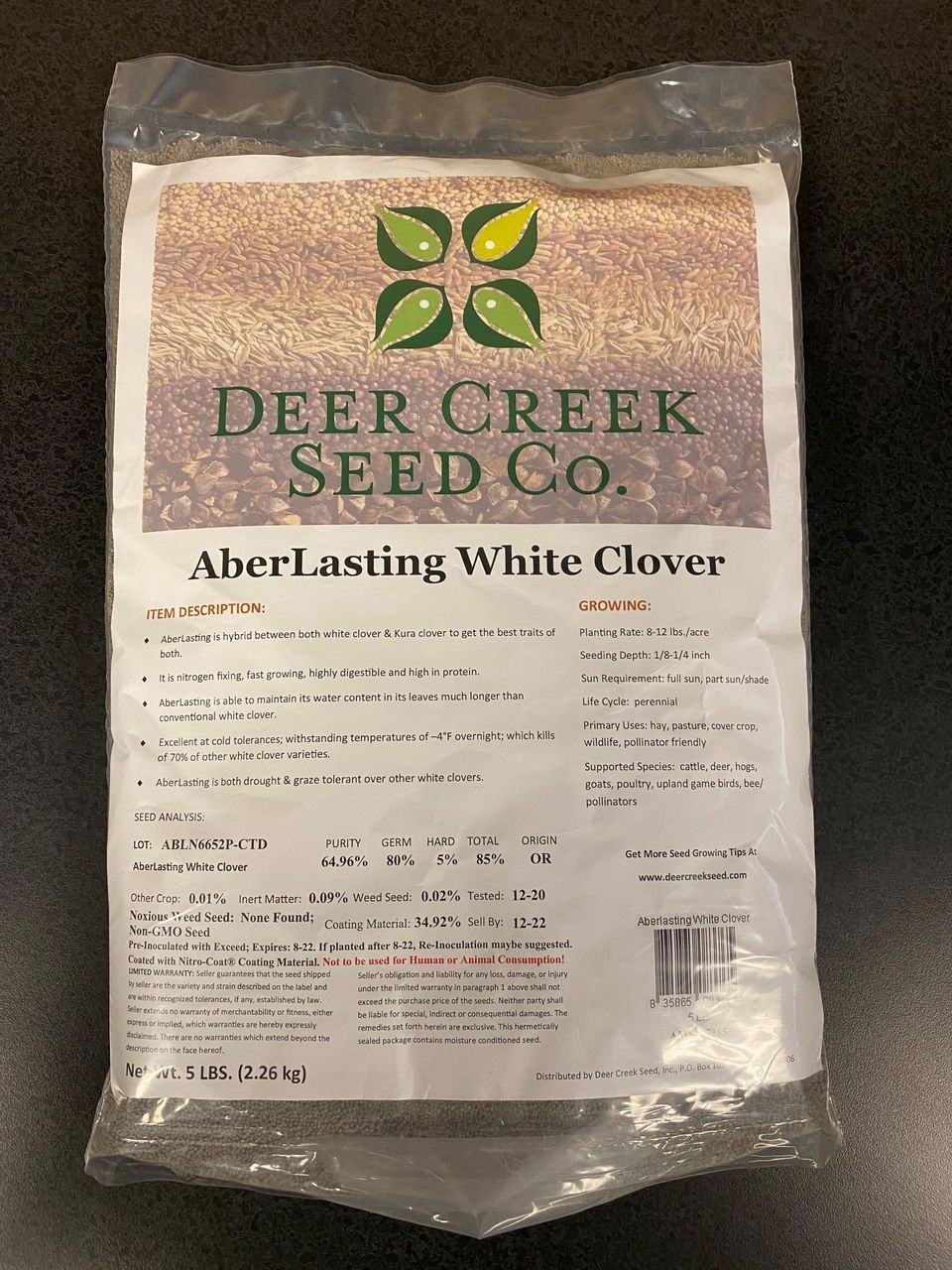
Spread the Seed
Because soil tillage isn’t practical in the woods, your best bet to open the ground is just scratching the soil with a steel tooth rake to break up clods and smooth the area. There are some small-scale no-till drills but they are expensive and hard to maneuver in small plots. Most folks only need a hand-cranked spreader to cover a backwoods plot.
Weigh the correct amount of seed for your space. Don’t guess. Your seed bag will provide the recommended application rate. Since you are broadcasting seed, you can lean towards the heavy end of the recommended rate, but more is not better. Overcrowded seed will compete with itself and none will thrive.
Set your spreader opening for the size seed you are planting. Most spreaders will provide a chart. Small clover seed requires a narrower opening than larger brassica seeds for the same coverage. Distribute seed evenly by crisscrossing both directions across the plot (north to south, and east to west). Try to maintain an even walking pace and equal distribution in both directions.
Rake lightly to cover the seed and then walk or ride over the plot to ensure good seed to soil contact.
Water It In
Ideally, schedule seed planting just before a moderate rainfall to let nature do the irrigating. But depending on your planting window and the weather forecast, you may need to help nature along. If no rain is forecasted for a week to ten days after planting, and it's practical for you to do, consider watering your newly seeded plot. A clean ATV-mounted tank or rain barrel can be helpful with this task.
If hand watering is impractical, you'll need to improve your rain dancing or delay planting until an opportunity arises. But the longer you wait, the more vulnerable your seed is to birds and squirrels, so keep an eye on the weather when planting time approaches.

Maintain Your Food Plot Year Round
Woodland plots planted with cool-season crops are relatively low maintenance, especially during the fall and winter seasons when they are at their best.
Fertilize
Hold off on fertilizers until seedlings have emerged and true leaf growth starts (generally 4-6 weeks). Then apply the recommended amount and balance of fertilizer from your soil test for your chosen seed variety. Do not fertilize at planting or use large amounts of nitrogen early on. It will only fuel weed, not crop growth.
Check Weeds
Weed competition may become more of a problem in spring or summer for perennial cropped plots. Decide if this competition is significant enough to limit your crop's performance. If a few annual weeds pop up in small plots, these can often be hand-pulled to prevent them from setting seed for a new generation. But if perennial weeds are creeping in and crowding out your perennial crop, they may indeed require control. Refer to our article on weed management for specific tactics to interrupt pesky weed lifecycles.
If your fall crop was an annual, spring and summer leave your plot exposed to weed takeover. Bridge the gap with a warm-season annual (like buckwheat) or frost seed a perennial for next season's use.
But year-round management doesn’t have to be overwhelming Fiduccia says.
“It simply means watching key markers in each season, like making sure your drainage is good and your pH value is on target, rather than ignoring the site. By managing it year-round, you’ll have a plot that will provide you with more success.”
Reap The Harvest
Backwoods food plots can be the bread and butter of your hunting plans. They can be a low-cost, high-reward investment of your time. With some upfront effort and a bit of ongoing attention, a woodland plot can provide years of hunting benefit. Backwoods plots meet deer where they live, which makes you likely have more deer sightings and better shot opportunities this season and into the future.
Deer Creek Seed is your resource for soil evaluation, food plot planning, and premium forage seed. Improving soils to benefit wildlife is a cumulative process that takes time but pays big rewards. There’s no time like today to start!
For over 40 years, we’ve helped hunters and sporting enthusiasts create wildlife buffets for all seasons. Let us know how we can help make your food plots outperform your neighbor’s.
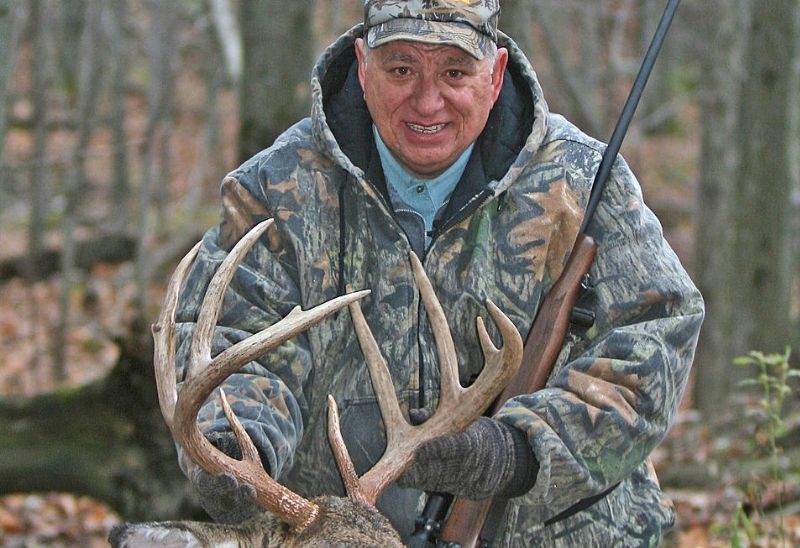 Photo courtesy of Peter Fiduccia
Photo courtesy of Peter Fiduccia
Shortened conversation with Peter Fiduccia:
Additional Resources
- Peter Fiduccia’s website offers videos and a blog series with helpful tips on deer behavior, food plots, venison recipes, and more.
- The National Deer Alliance’s website offers a wealth of information on food plots, herd management, habitat conservation, and even little-considered topics like hunting liability insurance.



